Decoding the Language of Ceramic and Pottery
Welcome to the fascinating world of ceramics and pottery, where every piece tells a story, and every glaze holds a secret. This article explores the intricate world of ceramics and pottery, delving into their historical significance, techniques, styles, and cultural implications, providing a comprehensive understanding of these timeless art forms. From the ancient civilizations that first shaped clay into functional and decorative objects to the modern artists pushing the boundaries of this medium, ceramics and pottery are not just about utility; they are a reflection of human creativity and cultural identity.
The journey of ceramics begins in the mists of time, with evidence suggesting that the earliest pottery dates back to around 29,000 BCE, found in the form of figurines and simple vessels. These early creations were not merely utilitarian but often held spiritual significance, showcasing the deep connection between art and culture. Over the millennia, various civilizations, including the Egyptians, Chinese, and Greeks, have contributed to the evolution of ceramic art, each adding their unique styles and techniques. The invention of the potter's wheel around 3500 BCE revolutionized pottery production, allowing for more uniform shapes and intricate designs. As we trace the history of ceramics, we uncover a rich tapestry of innovation and artistry that continues to inspire today.
When we talk about pottery, we often think of the beautiful, handcrafted items that grace our homes. But did you know that there are several distinct types of pottery, each with its unique properties and uses? In this section, we will explore the three primary types: earthenware, stoneware, and porcelain. Each type has its own characteristics and production techniques that make it suitable for different purposes.
Earthenware is perhaps the most accessible type of pottery, known for its porous and relatively low-fired nature. It often has a rustic charm and is commonly used for decorative pieces and everyday items like dishes and pots. Historically, earthenware has played a crucial role in daily life across various cultures, serving as a means of storage and cooking. Its vibrant colors and textures make it an appealing choice for artisans looking to express their creativity.
The production of earthenware can be achieved through various methods, including hand-building and wheel-throwing. Hand-building involves shaping the clay by hand, allowing for unique forms and textures, while wheel-throwing provides a more consistent shape. Both techniques require a deep understanding of the material and a great deal of skill, showcasing the craftsmanship that goes into each piece.
When it comes to decorating earthenware, the possibilities are endless. Artists often use techniques such as glazing, painting, and carving to enhance the visual appeal of their work. Glazing not only adds color but also creates a protective layer, making the pottery more durable. The interplay of colors and textures in earthenware can evoke emotions and tell stories, making each piece a unique work of art.
Stoneware, on the other hand, is known for its durability and strength. Fired at higher temperatures than earthenware, it becomes non-porous and is often used for functional items like dishes and cookware. The versatility of stoneware allows it to be both functional and artistic, making it a favorite among potters. Its earthy tones and robust nature give it a timeless appeal, ensuring its place in both kitchens and galleries.
Glazing is an art form in itself, transforming the surface of pottery into a canvas of color and texture. Different types of glazes, such as glossy, matte, and transparent, can dramatically change the appearance of a piece. The chemical properties of glazes play a significant role in their final look and functionality, making the glazing process a crucial step in pottery production.
Ceramic glazes enhance not only the visual appeal of pottery but also its durability. The glazing process involves applying a liquid mixture to the surface of the pottery, which is then fused to the clay body during firing. This process can create stunning effects, from shimmering finishes to intricate patterns, making each piece a unique creation.
Beyond glazing, various surface treatments can be applied to pottery to achieve different textures and finishes. Techniques such as burnishing, sanding, and applying slips can add depth and interest to the surface of a piece. Artists often experiment with these techniques, allowing their creativity to shine through in every detail.
Pottery is more than just functional art; it reflects cultural identity and traditions. Across different societies, pottery has played a role in rituals, daily life, and artistic expression. It serves as a medium through which communities express their values, beliefs, and stories, making it a vital part of our shared human experience.
In many cultures, pottery is integral to rituals and ceremonies. From sacred vessels used in religious practices to decorative items that celebrate life events, the craftsmanship involved in creating these pieces often carries symbolic meanings. The act of making pottery can be a spiritual experience, connecting the artist to their cultural heritage.
Today, traditional pottery techniques and designs continue to influence contemporary art movements. Artists around the world are incorporating ceramic elements into their work, bridging the gap between past and present. This ongoing relevance of ceramic art showcases its adaptability and enduring appeal, proving that even in a fast-paced modern world, the language of clay remains timeless.
- What is the difference between earthenware and stoneware? Earthenware is porous and lower-fired, while stoneware is non-porous and fired at higher temperatures, making it more durable.
- Can pottery be both functional and decorative? Absolutely! Many pottery pieces serve both purposes, enhancing the aesthetic of a space while remaining practical.
- What role does glazing play in pottery? Glazing adds color, texture, and durability to pottery, making it visually appealing and functional.
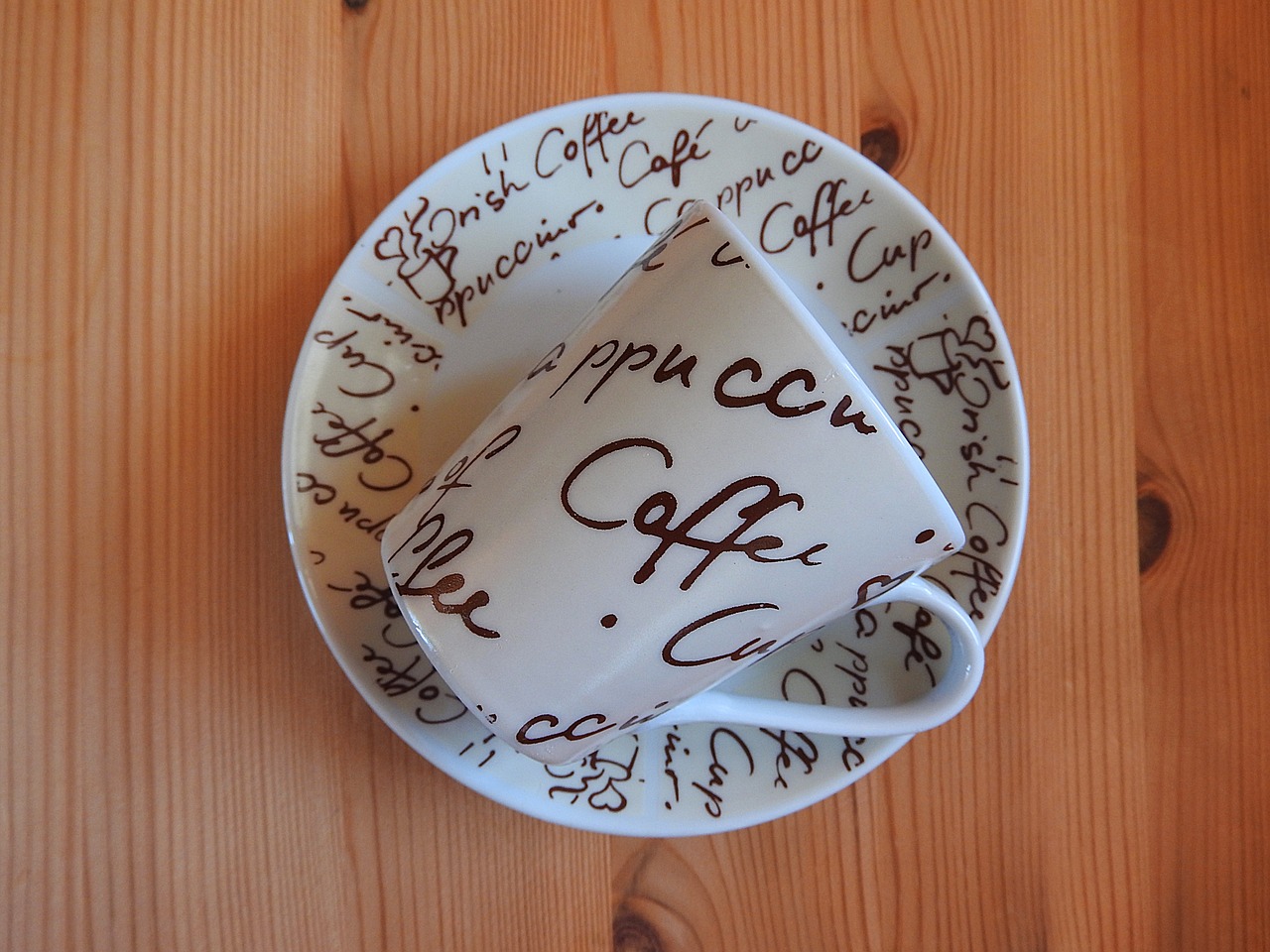
The History of Ceramics
The world of ceramics is a fascinating tapestry woven through time, showcasing the remarkable evolution of human creativity and technological advancement. From the earliest days of civilization, pottery has served not just as a utility but as a canvas for artistic expression. It is believed that the first pottery dates back to around 29,000 BC, with the discovery of the Venus of Dolní Věstonice, a figurine made from clay. This early form of ceramics already hinted at the importance of clay in human culture.
As we journey through history, we see that the art of ceramics flourished in various ancient civilizations. In China, for instance, pottery reached new heights during the Neolithic period. The Yangshao culture (approximately 5000-3000 BC) is known for its beautifully painted pottery, showcasing intricate designs and vibrant colors. This era marked a significant turning point in ceramic art, as craftsmen began to experiment with different firing techniques and glazing methods.
In the Mediterranean, the Greeks made their mark with black and red-figure pottery, which served both functional and decorative purposes. Their pots often depicted scenes of mythology and daily life, providing a window into their culture and beliefs. Similarly, the Romans advanced ceramic technology by introducing mass production techniques, making pottery more accessible to the general populace.
Throughout the Middle Ages, ceramics continued to evolve. The Islamic Golden Age saw the introduction of tin-glazed pottery, which allowed for vibrant colors and detailed patterns. This period was characterized by a significant exchange of ideas and techniques, as artisans from different cultures influenced one another, leading to a rich diversity of styles.
Fast forward to the Renaissance, and we see a revival of interest in classical forms and techniques. European potters began to experiment with new materials, such as porcelain, which was first developed in China. The secret of porcelain production remained elusive for centuries, but once it was discovered in Europe, it revolutionized the ceramic industry.
In modern times, ceramics have transcended their utilitarian origins to become a prominent form of artistic expression. Contemporary artists continue to push the boundaries of what can be achieved with clay, exploring new techniques and concepts. Today, ceramics are recognized not only for their functionality but also for their aesthetic and cultural significance, bridging the gap between art and everyday life.
To summarize the historical journey of ceramics, here’s a brief overview of key developments:
| Time Period | Key Developments | Influential Cultures |
|---|---|---|
| 29,000 BC | Earliest known pottery (Venus of Dolní Věstonice) | Prehistoric cultures |
| 5000-3000 BC | Painted pottery (Yangshao culture) | Chinese civilization |
| 800-300 BC | Black and red-figure pottery | Ancient Greece |
| Middle Ages | Tin-glazed pottery | Islamic cultures |
| Renaissance | Porcelain production | Europe |
| Modern Era | Contemporary ceramic art | Global influence |
In conclusion, the history of ceramics is not just about the evolution of techniques and materials; it reflects the broader story of human civilization itself. Each piece of pottery tells a story, embodying the cultural identity, artistic expression, and technological prowess of its time. As we continue to explore the intricate world of ceramics, we uncover layers of meaning and significance that connect us to our past and inspire future generations.
- What is the oldest known ceramic piece? The oldest known ceramic piece is the Venus of Dolní Věstonice, dating back to around 29,000 BC.
- What are the main types of pottery? The main types of pottery include earthenware, stoneware, and porcelain, each with distinct properties and uses.
- How did ceramics influence modern art? Traditional pottery techniques and designs continue to inspire contemporary artists, blending functionality with artistic expression.
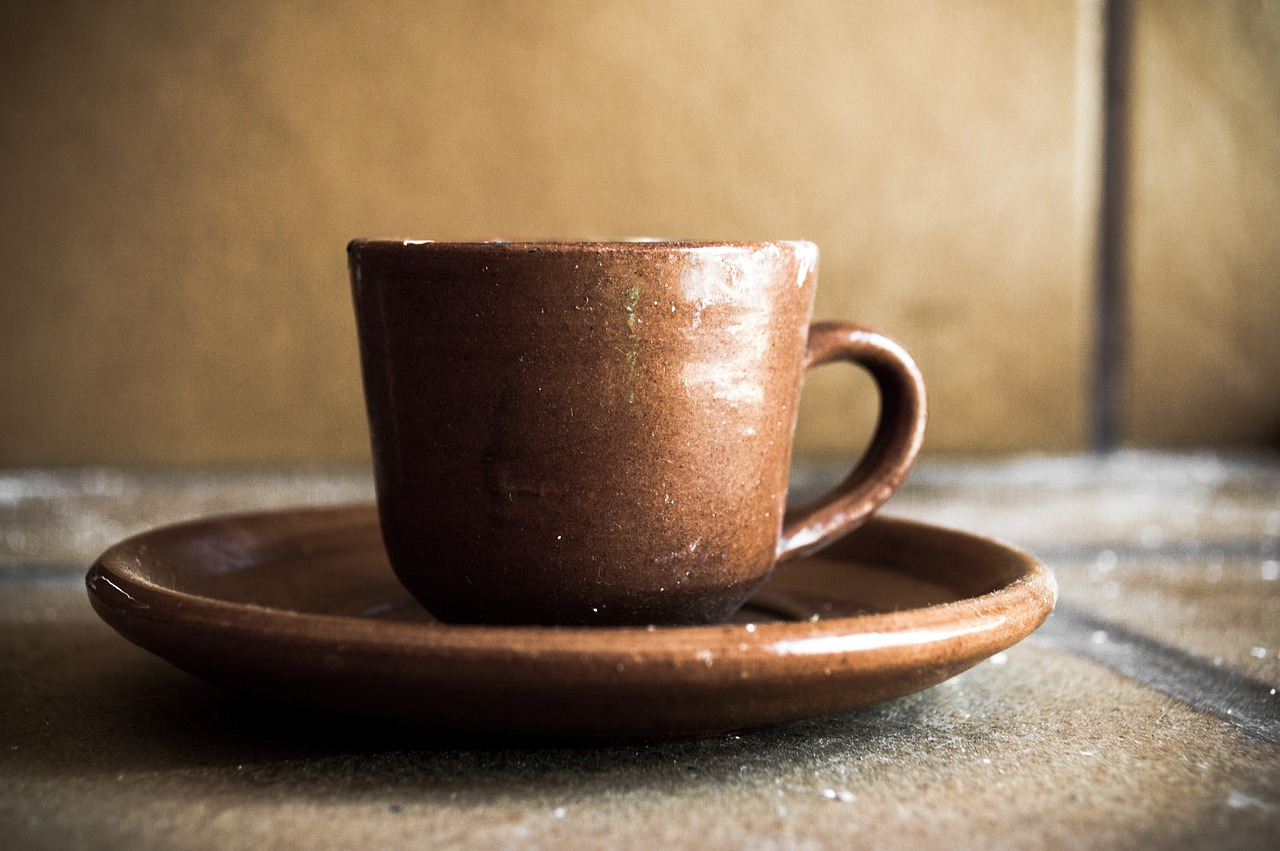
Types of Pottery
When it comes to pottery, the variety is as rich and diverse as the cultures that create it. Pottery isn't just about making beautiful objects; it's a reflection of history, geography, and the human experience. Each type of pottery has its own unique characteristics, properties, and uses, making them suitable for different purposes. In this section, we will explore three primary types of pottery: earthenware, stoneware, and porcelain. Each of these types has its own story to tell, and understanding them can deepen your appreciation for this ancient craft.
Earthenware is perhaps the most ancient form of pottery, dating back thousands of years. Made from clay that is fired at relatively low temperatures, earthenware is porous and often has a rustic, earthy appearance. Its versatility has made it a staple in many cultures for both functional and decorative purposes. Think of it as the comfortable, everyday clothing of pottery—practical, warm, and inviting. You might find earthenware pots in kitchens, gardens, or as decorative pieces in homes. The beauty of earthenware lies in its ability to connect us to our ancestors, who used similar techniques to create vessels for cooking, storage, and rituals.
Moving on to stoneware, this type of pottery is known for its durability and strength. Fired at higher temperatures than earthenware, stoneware is non-porous and often has a smooth, glass-like finish. Imagine it as the sturdy armor of pottery—ready to withstand the test of time and the rigors of daily use. Stoneware is often used for functional items like dinnerware, bakeware, and even decorative art pieces. Its ability to retain heat makes it a favorite for bakers and cooks alike. The rich, earthy tones of stoneware can evoke a sense of warmth and comfort, making it a beloved choice in many households.
Last but not least, we have porcelain. Often considered the most refined of the three, porcelain is made from a specific type of clay that is fired at extremely high temperatures, resulting in a dense, translucent material. Think of porcelain as the elegant evening gown of pottery—sophisticated, delicate, and breathtakingly beautiful. It is often used for fine dinnerware, decorative items, and art pieces. The smooth surface and ability to hold intricate designs make porcelain a favorite among artists and collectors. However, its fragility requires careful handling, making it a special addition to any pottery collection.
| Type of Pottery | Characteristics | Common Uses |
|---|---|---|
| Earthenware | Low-fired, porous, rustic | Cooking, storage, decorative |
| Stoneware | High-fired, durable, non-porous | Dinnerware, bakeware, art |
| Porcelain | High-fired, dense, translucent | Fine dinnerware, decorative art |
In conclusion, understanding the different types of pottery not only enhances our appreciation for these art forms but also connects us to the cultures and histories that shaped them. Whether you’re drawn to the rustic charm of earthenware, the robust functionality of stoneware, or the delicate beauty of porcelain, each type offers a unique glimpse into the world of ceramics. So, the next time you admire a piece of pottery, take a moment to consider the story behind it—its origins, its purpose, and the hands that crafted it.
- What is the main difference between earthenware and stoneware?
Earthenware is fired at lower temperatures and is porous, while stoneware is fired at higher temperatures, making it non-porous and more durable. - Can I use earthenware for cooking?
Yes, many earthenware pieces are designed for cooking and can be used in ovens, but it's essential to check if they are labeled as oven-safe. - Why is porcelain considered more expensive than other types of pottery?
Porcelain requires more refined materials and higher firing temperatures, which contribute to its cost and delicate nature.
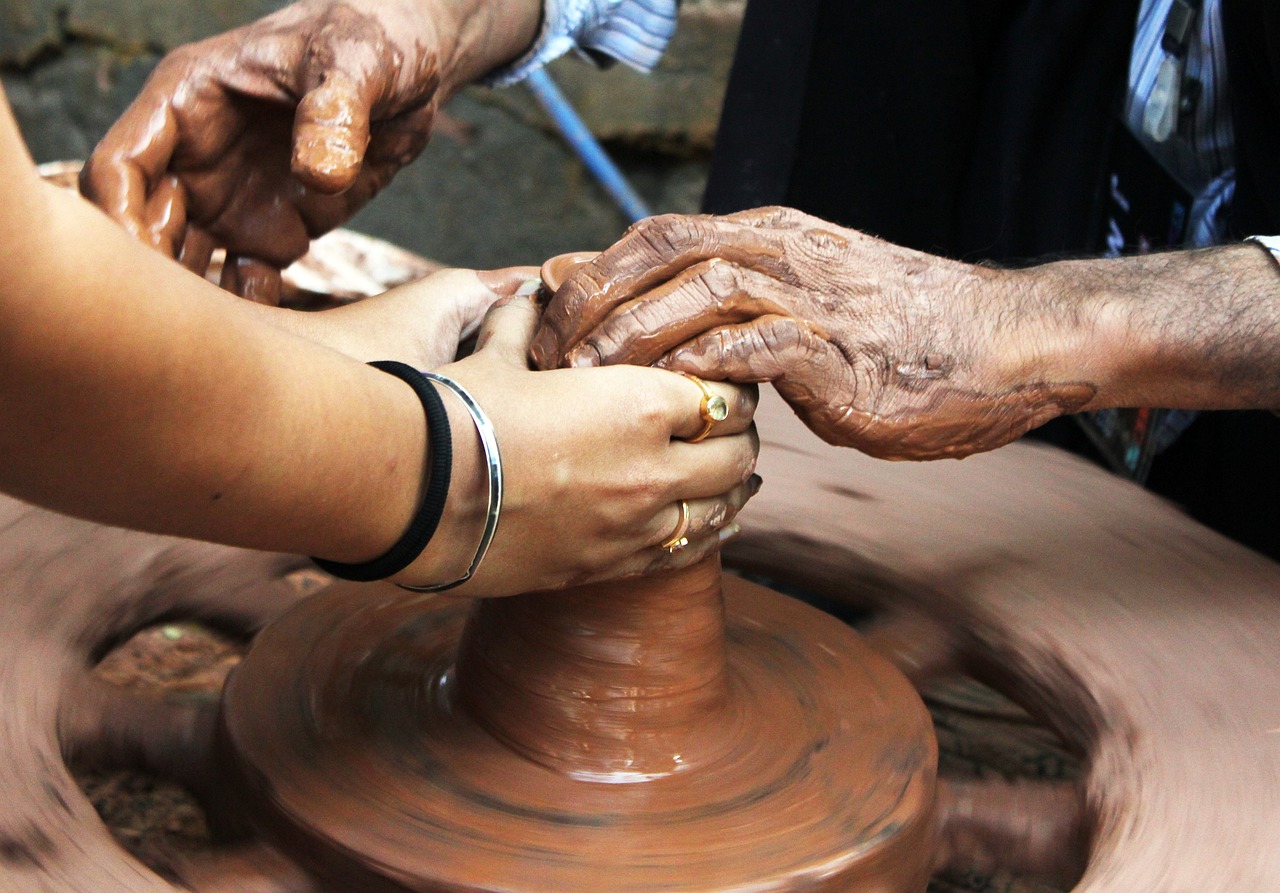
Earthenware
Earthenware is one of the oldest forms of pottery, characterized by its porous nature and typically low firing temperature. This type of pottery has been a staple in various cultures for thousands of years, serving both functional and decorative purposes. The beauty of earthenware lies not just in its utility, but also in its rich history and the stories it tells about the people who crafted it. Imagine walking through an ancient village, where the vibrant colors of earthenware pots and dishes catch your eye, each piece a testament to the craftsmanship and creativity of its maker. It's fascinating to think about how earthenware has played a role in daily life, from cooking and storage to ceremonial uses.
The production of earthenware involves a combination of natural clay and various additives, which can include sand and grog (pre-fired clay that is crushed into granules). This mixture is shaped using traditional methods like hand-building or wheel-throwing. Once shaped, the pieces are dried and then fired in a kiln at a lower temperature compared to stoneware or porcelain, typically between 1,830°F to 2,200°F (1,000°C to 1,200°C). This lower firing temperature contributes to the unique characteristics of earthenware, making it more porous and less durable than its counterparts. However, this porosity allows for the absorption of glazes and other decorative elements, which can enhance its aesthetic appeal.
In terms of decorative styles, earthenware is particularly versatile. Artists often apply glazes that can range from bright, vibrant colors to earthy, muted tones. The glazing process is crucial as it not only adds beauty but also creates a waterproof surface, making the pottery more functional. Some popular decorative techniques include:
- Slip Trailing: This involves applying a liquid clay mixture onto the surface to create intricate designs.
- Engobe: A colored slip that can be applied before or after firing to add texture and color.
- Under-glazing: Painting designs onto the unfired clay before applying a clear glaze on top.
The significance of earthenware goes beyond mere aesthetics. Historically, it has been used in various cultures for cooking, storage, and even as a medium for artistic expression. For example, in ancient Egypt, earthenware was essential for storing grains and liquids, while in Mesoamerica, it played a crucial role in rituals and ceremonies. Each piece of earthenware carries with it the weight of cultural heritage and the skills passed down through generations, making it a vital part of human history.
In conclusion, earthenware is not just a type of pottery; it is a reflection of human ingenuity and cultural identity. Its enduring presence in various societies highlights the adaptability and creativity of artisans throughout history. Whether used in everyday life or as a canvas for artistic expression, earthenware continues to captivate and inspire, reminding us of our shared past and the beauty of handcrafted art.
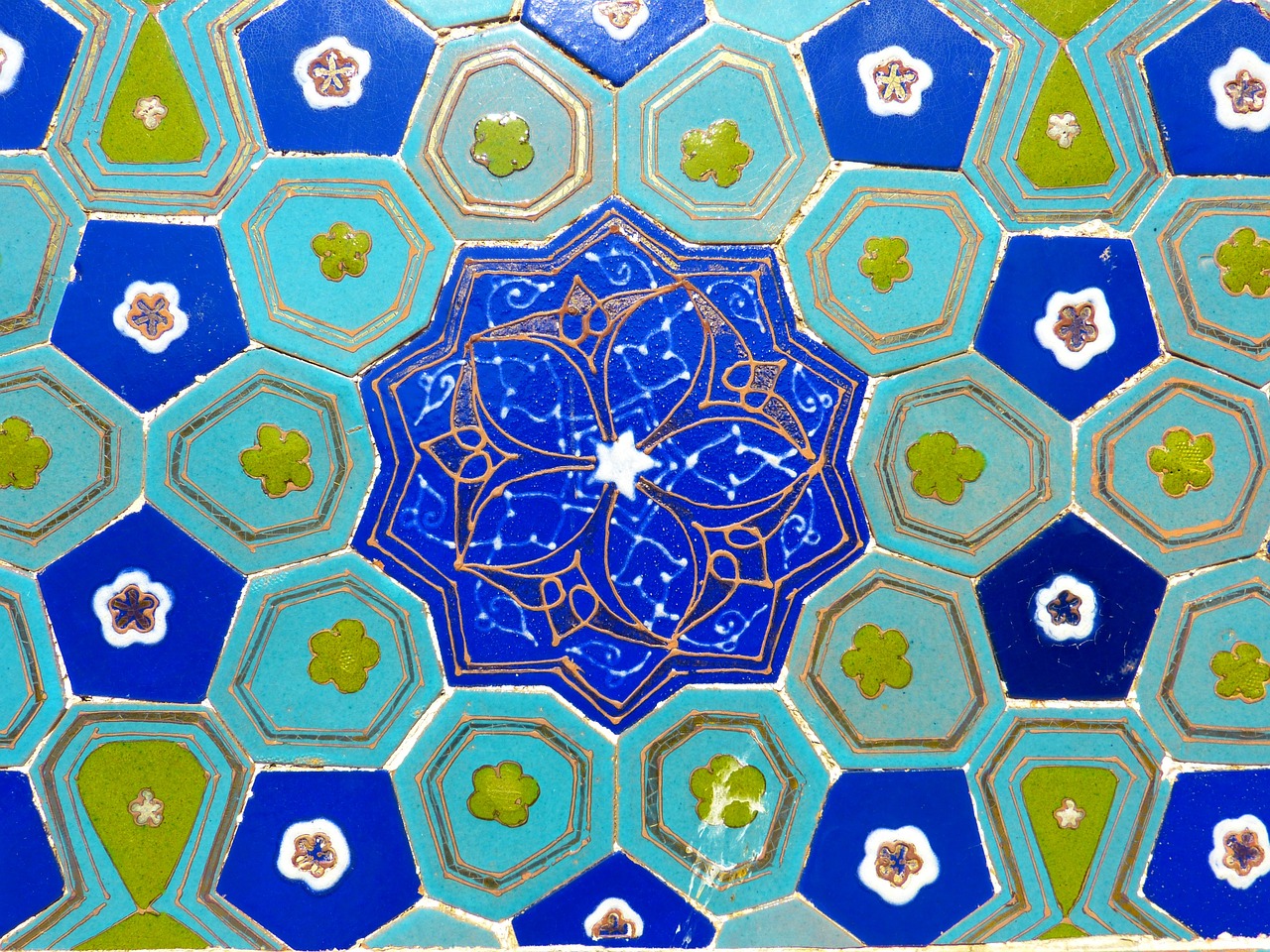
Production Techniques
When it comes to creating earthenware, the production techniques are as varied and fascinating as the pieces themselves. Two primary methods dominate the landscape: hand-building and wheel-throwing. Each technique carries its own charm and intricacies, allowing artists to express their creativity in unique ways. Let's dive deeper into these methods and explore what makes them so special.
Hand-building is one of the oldest pottery-making techniques, dating back thousands of years. This method involves shaping clay into desired forms using only the hands and simple tools. Imagine a sculptor carefully molding a block of clay, feeling every contour and curve as they go. Artists can create a variety of shapes, from functional bowls to intricate sculptures. The beauty of hand-building lies in its organic nature; no two pieces are ever exactly alike, which adds a personal touch to each creation.
On the other hand, wheel-throwing is a technique that emerged later and revolutionized pottery production. Using a potter's wheel, artists can spin a lump of clay into symmetrical shapes with remarkable precision. This method is particularly popular for creating consistent forms like vases and plates. The wheel allows for a fluid motion that can be mesmerizing to watch, as the clay transforms under the potter's skilled hands. While wheel-thrown pieces may seem uniform, the subtle variations in each item tell a story of the artist's touch.
Both techniques require a deep understanding of the properties of clay and how it behaves during shaping and firing. For instance, the moisture content in the clay is crucial; too wet and it may collapse, too dry and it becomes difficult to mold. This delicate balance is where the magic happens, and mastering it can take years of practice. Additionally, the choice of clay body plays a significant role in the outcome of the final piece, influencing its texture, color, and overall durability.
To illustrate the differences between these techniques, consider the following table:
| Technique | Description | Common Uses | Advantages |
|---|---|---|---|
| Hand-building | Shaping clay by hand without a wheel. | Sculptures, unique bowls, and artistic pieces. | Highly creative, unique pieces, and personal expression. |
| Wheel-throwing | Using a potter's wheel to shape clay. | Vases, plates, and functional items. | Symmetrical shapes, consistency, and efficiency. |
In addition to these foundational methods, there are also innovative approaches that contemporary artists are exploring. Techniques such as slip casting, where liquid clay is poured into a mold, allow for mass production while retaining artistic integrity. This method has opened new avenues for creativity, enabling artists to experiment with complex designs that would be challenging to achieve through traditional methods.
Ultimately, whether an artist chooses hand-building, wheel-throwing, or a modern technique, the essence of pottery remains the same: it is a beautiful marriage of art and function. Each piece is a testament to the skill and passion of the creator, reflecting not just their technical abilities but also their unique vision. As we continue to embrace both traditional and contemporary methods, the world of pottery remains an ever-evolving canvas for expression.
- What is the difference between earthenware, stoneware, and porcelain? Earthenware is porous and often used for decorative items, stoneware is durable and can be used for functional pieces, while porcelain is known for its fine quality and translucence.
- Can I make pottery at home? Absolutely! With some basic materials and tools, you can start experimenting with hand-building or wheel-throwing at home.
- What type of clay is best for beginners? Earthenware clay is often recommended for beginners due to its workability and forgiving nature.

Decorative Styles
The world of earthenware is not just about functionality; it’s a vibrant canvas that showcases the artistic flair of various cultures through its . When we think about pottery, we often envision simple, utilitarian forms. However, the truth is that earthenware has been transformed by an array of decorative techniques that breathe life into each piece. From glazing to painting, these methods not only enhance the aesthetic appeal but also tell stories of the cultures from which they originate.
One of the most prominent techniques is glazing, which involves applying a glass-like coating to the surface of the pottery. This process not only adds color and shine but also makes the ware more durable and water-resistant. The glazes can be transparent, opaque, or even textured, each offering a unique finish. For instance, a transparent glaze allows the natural clay color to show through, while an opaque glaze can completely alter the appearance, creating a bold statement piece.
In addition to glazing, painting is another beloved decorative style that has been practiced for centuries. Artists often use underglaze and overglaze techniques to apply intricate designs, ranging from simple patterns to elaborate scenes depicting mythology, nature, or daily life. This practice not only enhances the visual appeal but also serves as a means of cultural expression. For example, traditional Mexican pottery often features vibrant colors and motifs inspired by indigenous cultures, making each piece a reflection of its heritage.
Moreover, incising and carving are techniques that involve cutting into the surface of the clay to create patterns and designs. This method adds a tactile quality to the pottery, inviting touch and interaction. The depth of the incisions can vary, creating a play of light and shadow that adds dimension to the piece. This technique is particularly popular in African pottery, where intricate patterns often tell stories or convey messages.
Another fascinating aspect of decorative styles is the use of slip decoration, which involves applying a liquid mixture of clay and water (known as slip) to the surface of the pottery. This technique allows for the creation of detailed designs and can be used to add color before the final glazing. The versatility of slip means that artists can experiment with texture and layering, resulting in unique and eye-catching pieces.
To illustrate the diversity of decorative styles, let’s take a look at a comparison of some common techniques used in earthenware:
| Technique | Description | Visual Effect |
|---|---|---|
| Glazing | Applying a glass-like coating to the pottery | Shiny, colorful, and water-resistant finish |
| Painting | Applying designs using underglaze or overglaze | Intricate designs that reflect cultural narratives |
| Incising/Carving | Cutting into the clay surface | Tactile patterns that play with light and shadow |
| Slip Decoration | Applying liquid clay mixture to create designs | Layered textures and colors for visual depth |
In conclusion, the decorative styles of earthenware are as diverse as the cultures that create them. Each technique brings a unique touch to the pottery, transforming functional items into works of art. Whether through vibrant glazes, detailed paintings, or intricate carvings, these decorative elements not only enhance the beauty of the pieces but also serve as a testament to the rich cultural narratives that they embody.
- What is earthenware? Earthenware is a type of pottery made from clay that is fired at low temperatures, resulting in a porous and often colorful product.
- How is pottery decorated? Pottery can be decorated using various techniques, including glazing, painting, incising, and slip decoration.
- What is the significance of pottery in different cultures? Pottery holds cultural significance as it reflects traditions, rituals, and daily practices of different societies throughout history.
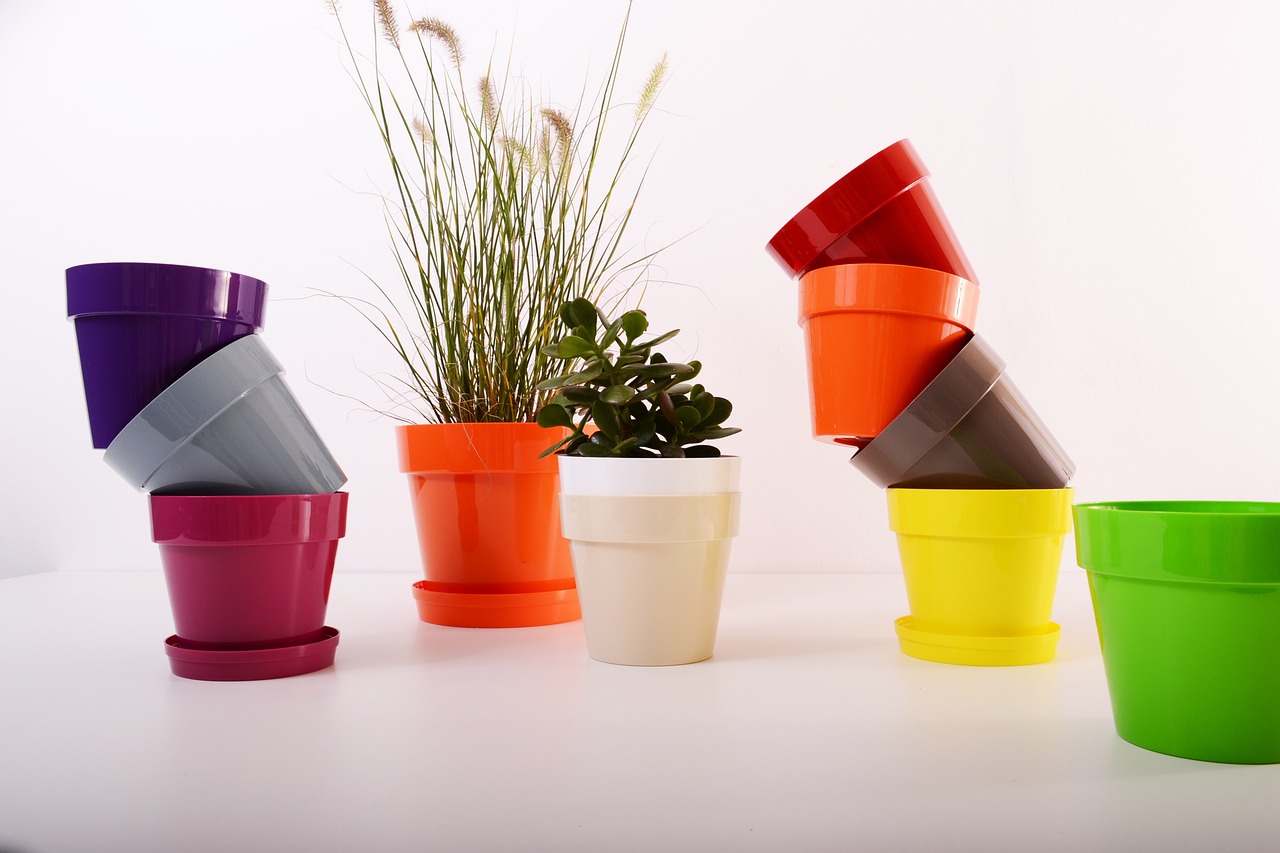
Stoneware
When we talk about , we are diving into a fascinating realm of pottery that boasts both durability and versatility. Originating from ancient times, stoneware is renowned for its ability to withstand high temperatures and its resistance to chipping and cracking. This makes it not only a favorite among potters but also a practical choice for everyday use. Imagine having dinnerware that can endure the rigors of both the oven and the dishwasher—stoneware is like the superhero of pottery!
One of the standout features of stoneware is its unique composition. Made from a blend of clay, feldspar, and quartz, this pottery type is fired at high temperatures, typically between 1,200°C to 1,300°C. This intense heat transforms the clay into a dense, non-porous material, making it ideal for both functional and artistic pieces. Whether it’s a rustic casserole dish or an intricate vase, stoneware provides a robust canvas for creativity.
Throughout history, stoneware has played a significant role in various cultures. For instance, during the Middle Ages, European potters began to develop stoneware techniques that allowed them to create highly decorative and functional items. German potters, in particular, became famous for their salt-glazed stoneware, which not only enhanced the durability of the pieces but also gave them a distinctive, glossy finish. This technique involved applying salt to the kiln during firing, creating a unique texture that is still celebrated today.
In addition to its historical significance, stoneware has evolved to meet modern demands. Today, potters employ a variety of glazing techniques to enhance the aesthetic appeal of stoneware. From glossy finishes to matte textures, the possibilities are endless. Some popular glazing techniques include:
- Celadon Glaze: A translucent glaze that gives a jade-like appearance, originating from ancient China.
- Shino Glaze: Known for its earthy tones and rich textures, this glaze is often used in Japanese pottery.
- Raku Glaze: A unique process that involves removing pottery from the kiln while it’s still hot, creating dramatic color variations.
Moreover, stoneware is not just about practicality; it also serves as a medium for artistic expression. Many contemporary artists are exploring stoneware to push the boundaries of traditional pottery. They are experimenting with shapes, colors, and textures, creating pieces that are not only functional but also visually striking. This blend of utility and artistry exemplifies the enduring relevance of stoneware in today’s art scene.
In summary, stoneware stands as a testament to the rich history and evolution of pottery. With its robust nature, historical significance, and artistic potential, it continues to captivate both potters and collectors alike. Whether you’re using it in your kitchen or displaying it as a work of art, stoneware undeniably holds a special place in the world of ceramics.
- What is the difference between stoneware and earthenware? Stoneware is fired at higher temperatures than earthenware, making it more durable and less porous.
- Can stoneware be used in the oven? Yes, stoneware is designed to withstand high temperatures and can be safely used in the oven.
- Is stoneware dishwasher safe? Most stoneware is dishwasher safe, but it's always best to check the manufacturer's instructions.
- How do I care for my stoneware? To maintain your stoneware, avoid sudden temperature changes, and clean it with mild soap and water.
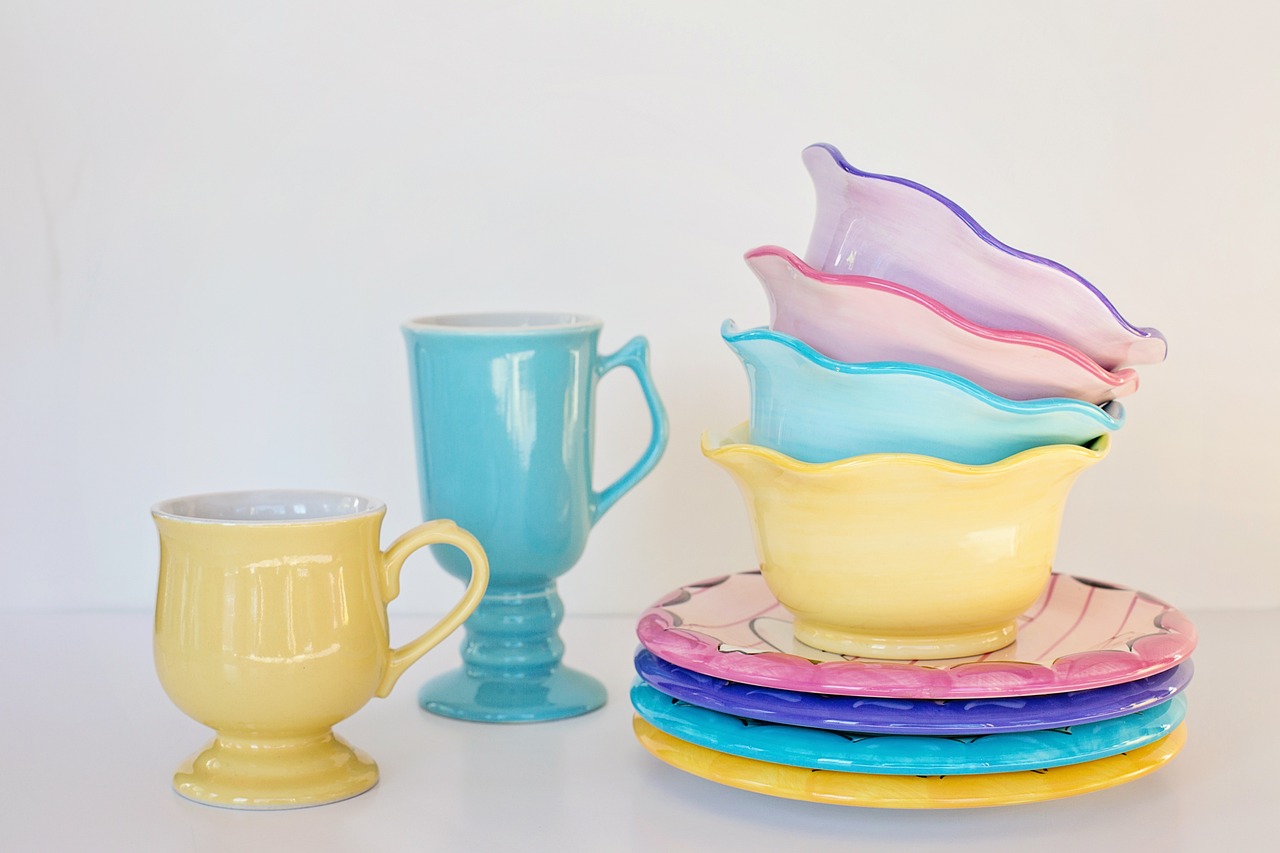
Glazing Techniques
Glazing is more than just a finishing touch; it's an essential aspect of ceramic art that transforms raw clay into stunning pieces of functional and decorative beauty. The process of glazing involves applying a glass-like coating to pottery, which not only enhances its aesthetic appeal but also provides a protective layer that makes the piece more durable and functional. Imagine a beautiful, vibrant landscape captured in a bowl or a mug—this is the magic that glazing brings to ceramics.
There are several types of glazes, each with unique chemical properties that affect the final appearance of the pottery. For instance, transparent glazes allow the clay body and any underglaze decoration to show through, while opaque glazes cover the surface entirely, creating a solid color that can completely change the character of the piece. Additionally, matte glazes offer a soft, non-reflective finish, whereas glossy glazes create a shiny, reflective surface that catches the eye. The choice of glaze can dramatically alter not just the look, but also the feel of the pottery.
The glazing process typically involves several steps, which can be summarized as follows:
- Preparation: The pottery must be thoroughly cleaned to remove dust and oils that could affect adhesion.
- Application: Glaze can be applied using various methods, including dipping, brushing, or spraying, each offering different effects.
- Firing: Once applied, the pottery is fired in a kiln, where the glaze melts and forms a glassy surface. The firing temperature and atmosphere can influence the final outcome significantly.
One of the fascinating aspects of glazing is how different firing techniques can lead to unexpected results. For example, reduction firing creates a low-oxygen environment in the kiln, which can yield rich, deep colors and unique textures that are highly sought after by artists and collectors alike. On the other hand, oxidation firing occurs in an oxygen-rich environment, resulting in bright, vibrant colors that are more predictable. Artists often experiment with these firing techniques to achieve their desired effects, leading to a myriad of possibilities.
Moreover, surface treatments can further enhance the glazed finish. Techniques such as sgraffito, where designs are scratched into the surface before glazing, or mishima, which involves inlaying colored clay into the surface, create intricate patterns and textures that elevate the overall design of the piece. These methods showcase the artist's skill and creativity, turning each piece into a unique work of art.
In conclusion, glazing techniques are a vital component of ceramic artistry, providing not only a protective layer but also a canvas for creativity. Whether through vibrant colors, intricate patterns, or innovative firing methods, glazing allows artists to express their vision and connect with the viewer on a deeper level. As you explore the world of ceramics, take a moment to appreciate the artistry involved in each glazed piece, and consider how these techniques have evolved and influenced the ceramics we see today.
1. What is the purpose of glazing in ceramics?
Glazing serves both aesthetic and functional purposes. It enhances the visual appeal of pottery and provides a protective layer that makes the piece more durable and water-resistant.
2. What are the different types of glazes?
There are various types of glazes, including transparent, opaque, matte, and glossy glazes, each offering different visual effects and finishes.
3. How do firing techniques affect glazing?
Firing techniques, such as reduction and oxidation firing, can significantly impact the color and texture of the glaze, leading to a wide range of outcomes.
4. Can I create my own glazes?
Yes! Many artists experiment with creating their own glazes by mixing different materials and adjusting the firing conditions to achieve unique results.
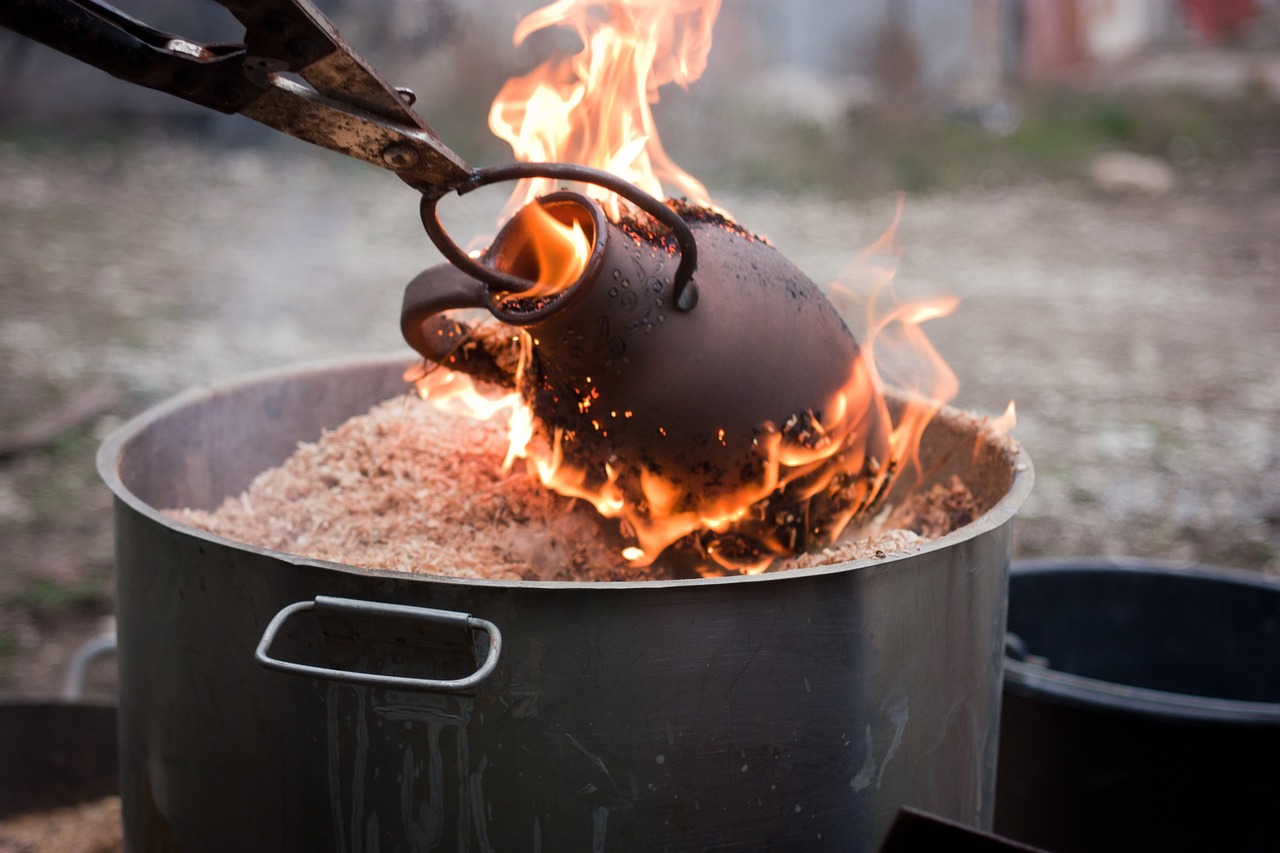
Ceramic Glazes
Ceramic glazes are not just mere coatings; they are a magical blend of science and artistry that can transform a simple clay vessel into a stunning piece of art. Imagine holding a bowl that shimmers under the light, reflecting colors that dance and change as you move it. That’s the power of glazes! They serve multiple purposes, from enhancing the aesthetic appeal to providing a protective layer that ensures the longevity of the pottery. But what exactly are these glazes made of, and how do they work?
At its core, a glaze is a glassy coating that is applied to ceramics before they are fired in a kiln. This process involves a complex interplay of materials, including silica, alumina, and various fluxes, which together create a durable surface. When fired, these components melt and fuse together, forming a smooth, often glossy surface that can be both functional and decorative. The beauty of ceramic glazes lies in their variety; they can be matte, glossy, transparent, or opaque, and they can showcase an array of colors and textures.
There are different types of glazes, each with its unique characteristics and applications. Here’s a brief overview:
- Glossy Glazes: These glazes have a shiny finish that reflects light beautifully, making colors appear more vibrant.
- Matte Glazes: Offering a softer, more subdued finish, matte glazes are perfect for achieving a rustic or contemporary look.
- Transparent Glazes: These allow the underlying clay body or decorative elements to show through, adding depth to the piece.
- Opaque Glazes: These completely cover the clay body, providing a solid color that can be used for bold designs.
But it doesn’t stop there! The glazing process itself can be an art form. Potters often experiment with layering different glazes, creating unique effects that can resemble everything from the depths of the ocean to the vibrant colors of a sunset. The firing temperature and technique used can also impact the final result. For example, a high-fire glaze can produce stunning, rich colors, while low-fire glazes might yield bright, playful hues. The choice of glaze can significantly affect the overall look and feel of the pottery, making it a crucial decision for any ceramic artist.
In addition to aesthetics, glazes play a functional role. They can make pottery waterproof, which is essential for items like bowls and vases. Some glazes are also food-safe, meaning they can be used for dinnerware without leaching harmful substances. This safety aspect is vital for potters who want to create functional pieces that can be enjoyed in everyday life.
As the world of ceramics continues to evolve, so do glazing techniques. Modern potters are constantly pushing the boundaries of what’s possible, experimenting with new materials and methods. For instance, some artists are now using digital technology to create intricate glaze patterns that were once thought impossible. This fusion of traditional craftsmanship and modern innovation keeps the art of ceramics alive and thriving.
In conclusion, ceramic glazes are a fascinating aspect of pottery that combines chemistry, artistry, and functionality. Whether you’re a seasoned potter or a curious enthusiast, understanding the role and variety of glazes can deepen your appreciation for this timeless craft. So next time you admire a beautifully glazed piece, take a moment to think about the artistry and science that went into creating that stunning finish!
- What are the main components of ceramic glazes?
The primary components include silica, alumina, and various fluxes that help form a glassy surface when fired. - Can I use any glaze on food items?
Not all glazes are food-safe. Always check if the glaze is labeled as food-safe before using it for dinnerware. - How do I achieve different colors in glazes?
Different metal oxides are added to the glaze mix to create a variety of colors. For example, cobalt oxide produces blue, while iron oxide can give a range of earthy tones. - Is it possible to layer glazes?
Yes! Layering glazes can create unique effects and textures, but it requires some experimentation to achieve the desired results.

Surface Treatments
When it comes to pottery, the surface treatment is like the icing on a cake; it can transform a simple piece into a stunning work of art. These treatments not only enhance the visual appeal of ceramic pieces but also affect their texture and functionality. From the smooth, glossy finishes of glazes to the rough, earthy textures of raw clay, the choices are as diverse as the artists who create them.
One of the most common surface treatments is glazing, which involves applying a glass-like coating to the pottery. This process not only adds color but also creates a waterproof barrier, making the pottery more functional. There are various types of glazes, each with unique properties and effects. For instance, matte glazes provide a soft, non-reflective surface, while glossy glazes can create a vibrant, reflective finish that draws the eye. The choice of glaze can completely alter the perception of a piece, turning it from mundane to extraordinary.
In addition to glazing, artists often employ other surface treatments to achieve different effects. Techniques such as burnishing, where the surface is polished to a shine before firing, can create a smooth, reflective surface without the use of glaze. This method is particularly popular in traditional pottery, where the natural beauty of the clay is emphasized. Another technique is engobe, which involves applying a colored slip to the surface of the pottery before it is fired. This can add depth and complexity to the design, allowing for intricate patterns and textures.
Moreover, the application of underglazes offers yet another dimension to surface treatments. Underglazes are applied before the final glaze and can be used to create detailed designs that are preserved under the glossy finish. This technique allows artists to combine the durability of glazing with the intricacy of painting, resulting in pieces that are both beautiful and long-lasting.
Surface treatments can also include the use of stains and patinas, which can give pottery an aged or weathered appearance. These treatments can evoke a sense of history and connection to the earth, appealing to those who appreciate the natural imperfections of handmade objects. Artists often experiment with various combinations of these techniques to create unique finishes that reflect their personal style and artistic vision.
To summarize, the world of surface treatments in pottery is vast and varied, with techniques that can dramatically alter the look and feel of ceramic pieces. Whether through glazing, burnishing, or the application of underglazes, each method offers artists a way to express their creativity and enhance the functionality of their work. The next time you admire a piece of pottery, take a moment to consider the surface treatments that contribute to its beauty and character.
- What is the purpose of surface treatments in pottery?
Surface treatments enhance the visual appeal, texture, and functionality of ceramic pieces. - What are the different types of glazes?
There are various types of glazes, including matte, glossy, and transparent, each creating different effects on pottery. - Can surface treatments affect the durability of pottery?
Yes, treatments like glazing can create a waterproof barrier, making pottery more durable and functional. - What is burnishing in pottery?
Burnishing is a technique where the surface is polished to a shine before firing, enhancing the natural beauty of the clay.
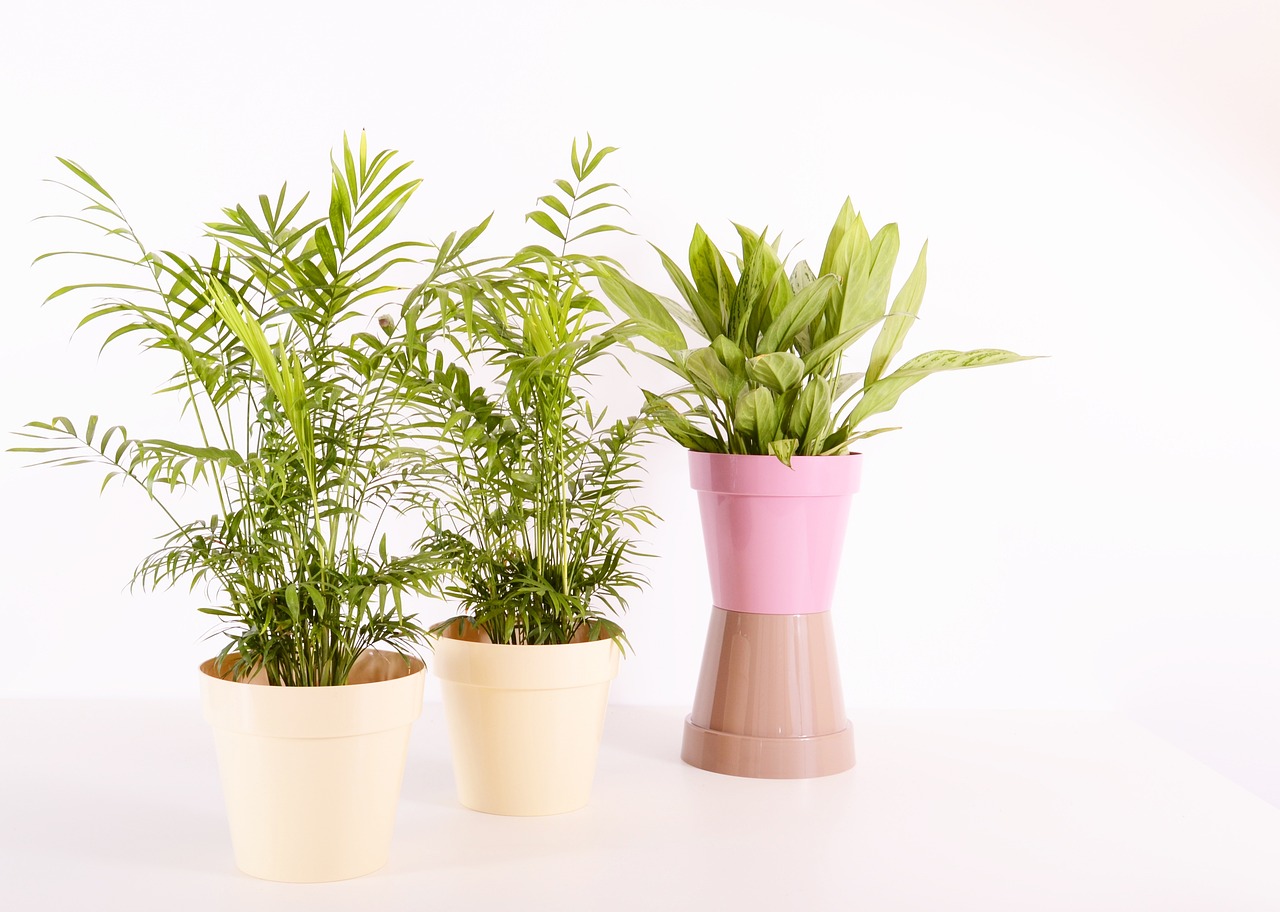
Cultural Significance of Pottery
The world of pottery goes far beyond mere utility; it is a vibrant tapestry that weaves together cultural identity, tradition, and artistic expression. From the humble clay pot used in everyday cooking to the intricately designed ceremonial vessels, pottery serves as a mirror reflecting the values, beliefs, and practices of a society. Have you ever thought about how a simple bowl could carry the weight of history and cultural significance? Pottery is not just about form and function; it encapsulates stories that span generations.
In many cultures, pottery plays a crucial role in rituals and ceremonies. For instance, in Native American communities, clay pots are often used in sacred ceremonies, symbolizing life and fertility. The act of creating pottery itself can be seen as a spiritual practice, connecting the maker to their ancestors and the earth. This relationship between the potter and their craft is not only about creating beautiful objects but also about preserving cultural heritage. Each piece tells a story—of the land, the people, and their traditions.
Moreover, pottery holds a significant place in daily life across various cultures. It serves practical purposes, such as storing food and water, yet it is also a canvas for artistic expression. In regions like the Mediterranean, pottery styles vary dramatically, reflecting local customs and available materials. For example, the vibrant colors and intricate designs of Mexican Talavera pottery stand in stark contrast to the more subdued and functional styles of Scandinavian ceramics. This diversity showcases how different cultures interpret and utilize pottery in their daily lives.
Additionally, pottery can act as a social commentary, reflecting the changing dynamics within a society. In times of upheaval, artists may use their craft to express dissent or to document historical events. The pottery of the post-war period in Europe, for example, often features themes of reconstruction and hope, illustrating how art can respond to societal needs. Pottery becomes a vessel not just for food, but for ideas, emotions, and cultural commentary.
To further illustrate the cultural significance of pottery, here’s a table summarizing various cultural uses of pottery around the world:
| Culture | Use of Pottery | Significance |
|---|---|---|
| Native American | Ceremonial and functional | Symbolizes life, fertility, and connection to ancestors |
| Mexican | Decorative and functional | Represents vibrant culture and heritage |
| Japanese | Tea ceremonies | Emphasizes aesthetics and mindfulness |
| Scandinavian | Functional | Focus on simplicity and utility |
As we delve deeper into the world of ceramics, it becomes clear that pottery is more than just an art form; it is a vital part of human history and identity. It connects us to our past, reflects our present, and inspires future generations. So next time you come across a piece of pottery, take a moment to appreciate the rich tapestry of culture and history that it represents. It's not just clay; it's a story waiting to be told.
- What is the oldest known pottery? The oldest known pottery dates back to around 20,000 years ago, discovered in China.
- How does pottery reflect cultural identity? Pottery reflects cultural identity through its designs, materials, and uses, showcasing the values and traditions of a society.
- What are some common pottery techniques? Common pottery techniques include hand-building, wheel-throwing, and slip-casting.
- Can pottery be both functional and artistic? Absolutely! Many pottery pieces serve practical purposes while also being beautifully crafted works of art.
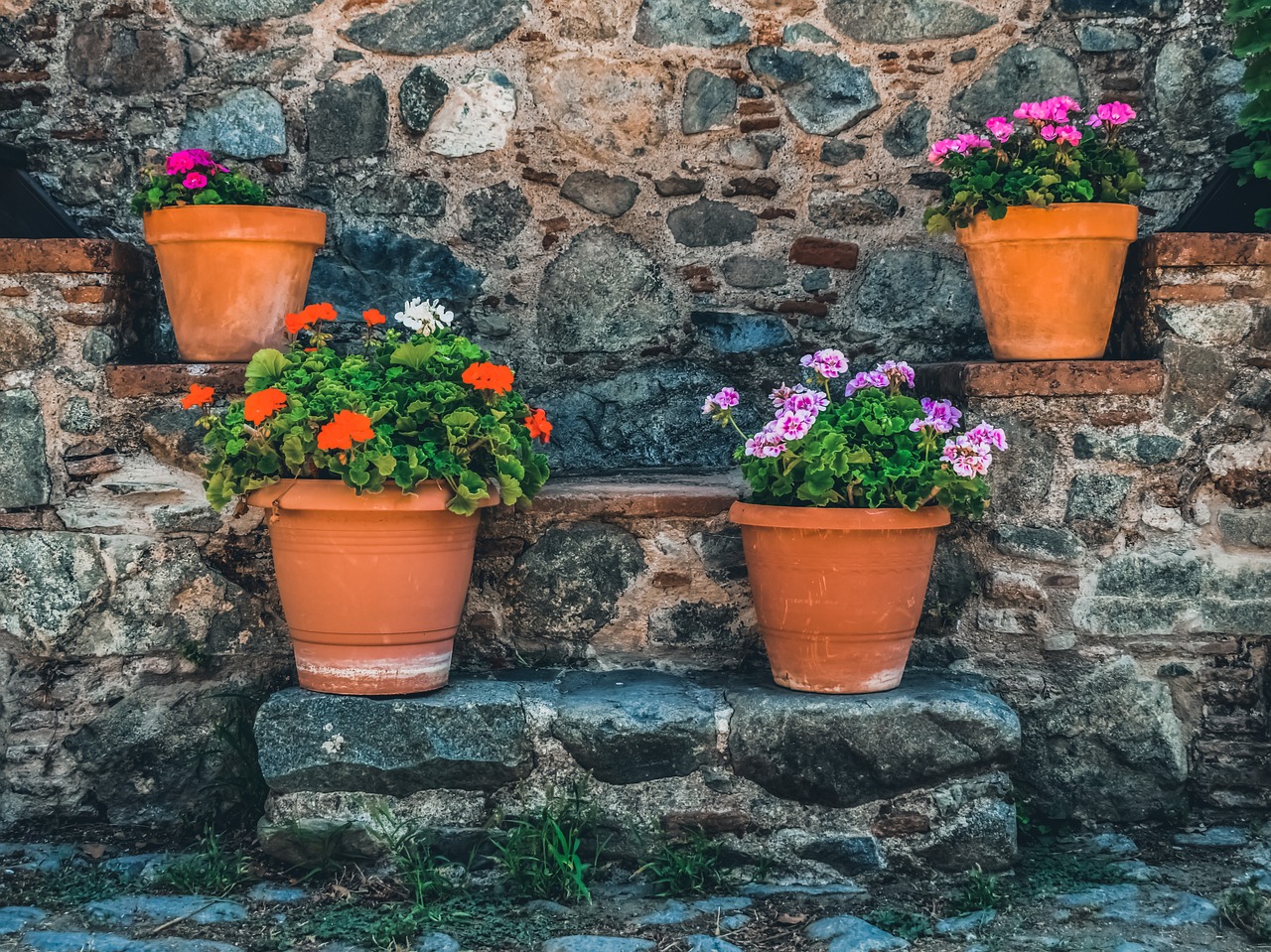
Pottery in Rituals
Pottery has long served as a vessel not just for practical use, but also as a medium for expressing cultural identity and spiritual beliefs. Across various societies, pottery plays a crucial role in rituals, symbolizing a connection between the material and spiritual worlds. Imagine attending a wedding where the couple drinks from a beautifully crafted ceremonial cup, or observing a sacred ritual where offerings are placed in intricately designed pots—these moments highlight how pottery transcends mere functionality, becoming a key player in human connection and tradition.
In many cultures, specific types of pottery are associated with particular rituals. For instance, in some Indigenous cultures, clay pots are used in ceremonies to honor ancestors or to celebrate the changing of seasons. These pots may be adorned with symbols or patterns that hold deep meaning, reflecting the beliefs and stories of the people. The craftsmanship involved in creating these pieces often involves traditional methods passed down through generations, emphasizing the importance of heritage and community.
Moreover, the act of creating pottery for rituals can itself be a spiritual practice. The potter, often seen as a mediator between the physical and spiritual realms, engages in a process that is both artistic and sacred. Each piece crafted is imbued with intention, whether it’s for a birth celebration, a funeral, or a harvest festival. The materials used—clay, water, and fire—are transformed into something that not only serves a purpose but also carries the weight of collective memory and cultural significance.
Here are some common examples of how pottery is used in various rituals:
- Weddings: Pottery is often used in wedding ceremonies, where couples may share a drink from a ceremonial vessel, symbolizing unity.
- Funerals: In some cultures, pottery is used to hold offerings for the deceased, showcasing respect and remembrance.
- Harvest Festivals: Pots may be filled with fruits or grains as offerings to deities, celebrating abundance and gratitude.
- Coming-of-Age Ceremonies: Young individuals may receive specially crafted pottery as a rite of passage, marking their transition into adulthood.
The symbolism of pottery in rituals extends beyond its physical form. The colors, shapes, and designs often carry specific meanings. For example, a red pot may symbolize fertility and life, while a black pot might represent death and the afterlife. This rich tapestry of meanings adds depth to the rituals themselves, allowing participants to engage with their cultural narratives on a profound level.
In contemporary society, the influence of traditional pottery in rituals remains significant. Artists and potters draw inspiration from ancient practices, infusing modern designs with historical significance. This blending of old and new not only preserves cultural heritage but also invites new interpretations and meanings, ensuring that the art of pottery continues to thrive in ritualistic contexts. In a world that often feels disconnected, the tactile and visual nature of pottery serves as a reminder of our shared humanity and the rituals that bind us together.
- What types of pottery are commonly used in rituals? Various types such as ceremonial cups, urns, and offering bowls are commonly used, each serving a specific purpose.
- How does pottery reflect cultural beliefs? The designs, colors, and materials used in pottery often symbolize important cultural narratives and spiritual beliefs.
- Can pottery-making be considered a spiritual practice? Yes, for many cultures, the process of making pottery is a spiritual act that connects the creator with their heritage and community.
- How has modern art influenced traditional pottery rituals? Contemporary artists often incorporate traditional techniques and designs into their work, creating a dialogue between past and present.

Influence on Modern Art
This article explores the intricate world of ceramics and pottery, delving into their historical significance, techniques, styles, and cultural implications, providing a comprehensive understanding of these timeless art forms.
An overview of the evolution of ceramic art, tracing its origins from ancient civilizations to modern practices, highlighting key developments and influential cultures that shaped its progress over millennia.
Exploring the various types of pottery, including earthenware, stoneware, and porcelain, this section outlines their unique properties, uses, and the techniques involved in creating each type.
A closer look at earthenware, its characteristics, and its historical significance in everyday life, showcasing how this type of pottery has been used across different cultures.
Discussing the traditional and modern methods used to produce earthenware, including hand-building and wheel-throwing, emphasizing the craftsmanship involved in each technique.
Examining the various decorative styles associated with earthenware, such as glazing and painting, highlighting how these elements contribute to its aesthetic appeal.
An exploration of stoneware, its durability, and its applications in both functional and artistic contexts, illustrating its importance in pottery history.
This section delves into the art of glazing, discussing different types of glazes, their chemical properties, and their impact on the final appearance and functionality of ceramic pieces.
Explaining the role of ceramic glazes in enhancing the visual appeal and durability of pottery, including insights into the glazing process and firing techniques.
Discussing various surface treatments and their effects on the texture and finish of pottery, providing examples of how artists use these techniques creatively.
An examination of how pottery reflects cultural identity, traditions, and social practices, showcasing its role in rituals, daily life, and artistic expression across different societies.
Highlighting the use of pottery in cultural rituals and ceremonies, exploring its symbolic meanings and the craftsmanship involved in creating ceremonial pieces.
When we think about the influence of pottery on modern art, it's like looking through a kaleidoscope of creativity that blends the past with the present. Artists today are not just using clay to create functional items; they are pushing boundaries, experimenting, and integrating ancient techniques into contemporary forms. This fusion has resulted in an artistic dialogue that respects tradition while embracing innovation.
For instance, the sculptural forms found in modern ceramic art often draw inspiration from historical pottery styles. Artists like Grayson Perry and Ai Weiwei utilize traditional pottery techniques to convey modern narratives, addressing issues such as identity, politics, and social commentary. Their works are not merely ceramics; they are stories told through the medium of clay, merging history and modernity in a captivating manner.
Moreover, the vibrant colors and textures that characterize contemporary ceramics often stem from ancient glazing techniques. The use of glazes has evolved significantly, with modern artists experimenting with chemical compositions to achieve unexpected results. This exploration not only enhances the visual appeal of their work but also serves as a testament to the enduring legacy of pottery craftsmanship.
In addition, the rise of functional art has blurred the lines between utility and aesthetics. Pottery has become a canvas for self-expression, with artists creating pieces that are as much about beauty as they are about function. This trend is evident in the works of many ceramicists who are redefining traditional forms, making them relevant in today’s artistic landscape.
To illustrate the impact of pottery on modern art, consider the following table that highlights key artists and their contributions:
| Artist | Contribution | Style |
|---|---|---|
| Grayson Perry | Explores identity and gender through ceramics | Contemporary |
| Ai Weiwei | Combines traditional techniques with political themes | Conceptual |
| Lucie Rie | Innovative glazing techniques and minimalist forms | Modernist |
In conclusion, the influence of pottery on modern art is profound and multifaceted. It serves as a bridge between cultures and eras, allowing artists to express themselves in ways that resonate with both the past and the present. Whether through innovative techniques or thematic exploration, pottery continues to inspire and challenge the boundaries of artistic expression.
- What is the difference between earthenware, stoneware, and porcelain?
Earthenware is porous and often less durable, stoneware is known for its strength and resistance to chipping, while porcelain is a fine, high-fired clay known for its translucence and beauty.
- How do modern artists use traditional pottery techniques?
Many modern artists incorporate traditional methods like hand-building and wheel-throwing, but they often infuse contemporary themes and aesthetics into their work, creating a dialogue between past and present.
- What role does glazing play in ceramic art?
Glazing enhances the visual appeal and durability of pottery, providing a protective layer while allowing for creative expression through color and texture.
Frequently Asked Questions
- What is the difference between earthenware, stoneware, and porcelain?
Earthenware is a type of pottery that is fired at low temperatures, making it more porous and less durable than stoneware and porcelain. Stoneware, on the other hand, is fired at higher temperatures, resulting in a denser, sturdier product that is often used for functional items. Porcelain is the most refined type, known for its strength and translucence, and is fired at very high temperatures, giving it a smooth finish.
- How are ceramics made?
The process of making ceramics typically involves several key steps: shaping the clay (either by hand or using a potter's wheel), drying it to remove moisture, firing it in a kiln to harden it, and finally glazing it to enhance its appearance and durability. Each step requires skill and precision to ensure a high-quality finished product.
- What are the common glazing techniques used in pottery?
There are several glazing techniques that potters use, including dipping, pouring, and spraying glazes onto the surface of the pottery. Each method can produce different textures and finishes, and potters often experiment with layering glazes to achieve unique visual effects. Some popular types of glazes include glossy, matte, and satin finishes.
- Why is pottery important in cultural rituals?
Pottery plays a significant role in many cultural rituals as it often symbolizes tradition, identity, and community. Ceremonial pieces can hold deep meanings, representing beliefs and practices that have been passed down through generations. The craftsmanship involved in creating these items also reflects the skill and artistry of the culture.
- Can modern art be influenced by traditional pottery techniques?
Absolutely! Many contemporary artists draw inspiration from traditional pottery techniques, incorporating them into modern art forms. This fusion of old and new not only keeps the art of pottery alive but also allows for innovative expressions that resonate with today's audiences.
- What tools do potters typically use?
Potters use a variety of tools to create their works, including a potter's wheel, various shaping tools (like ribs and paddles), and carving tools for detailing. They also use kilns for firing their pieces and various brushes for applying glazes. Each tool helps to enhance the potter's creativity and precision.
- How can I start learning pottery?
If you're interested in learning pottery, consider enrolling in a local pottery class or workshop. Many community centers and art schools offer beginner courses. Additionally, there are numerous online tutorials and resources that can guide you through the basics of working with clay, shaping, and glazing.


















